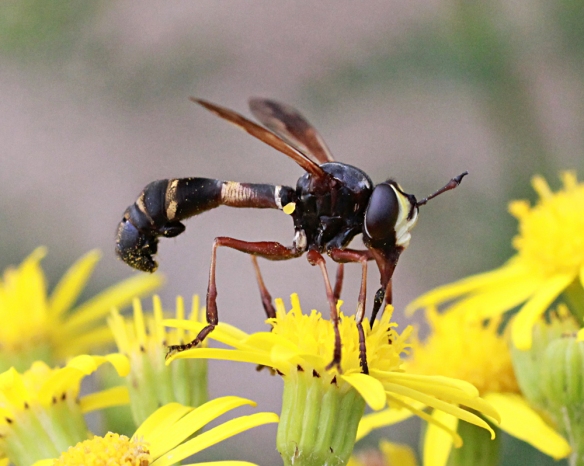 The park is looking rather brown after all the recent sun. There are very few flowers apart from yarrow and a scattering of mallow, and the last remnants of thistles have seeded and spewing fluffy spores all over the place. The brambles are heavy with fruit and the hawthorn berries are slowly ripening a deep red colour. But there is a flash of yellow that stands out in the middle of all the brown – ragwort. Its only a small patch, just nine plants, and it is a feast of pollen for flies and bees.
The park is looking rather brown after all the recent sun. There are very few flowers apart from yarrow and a scattering of mallow, and the last remnants of thistles have seeded and spewing fluffy spores all over the place. The brambles are heavy with fruit and the hawthorn berries are slowly ripening a deep red colour. But there is a flash of yellow that stands out in the middle of all the brown – ragwort. Its only a small patch, just nine plants, and it is a feast of pollen for flies and bees.
The conopid fly is a regular visitor to this patch. It’s more commonly known as a thick-headed fly and is rather ugly looking. It is a parasitic fly and lays its eggs in bees and wasps. This one – Physocephala rufipes – parasites bumblebees. The eggs are often inserted by the female fly between the bumblebees’s body segments while in flight, and they hatch out soon afterwards. The larvae eat the bee from the inside.
